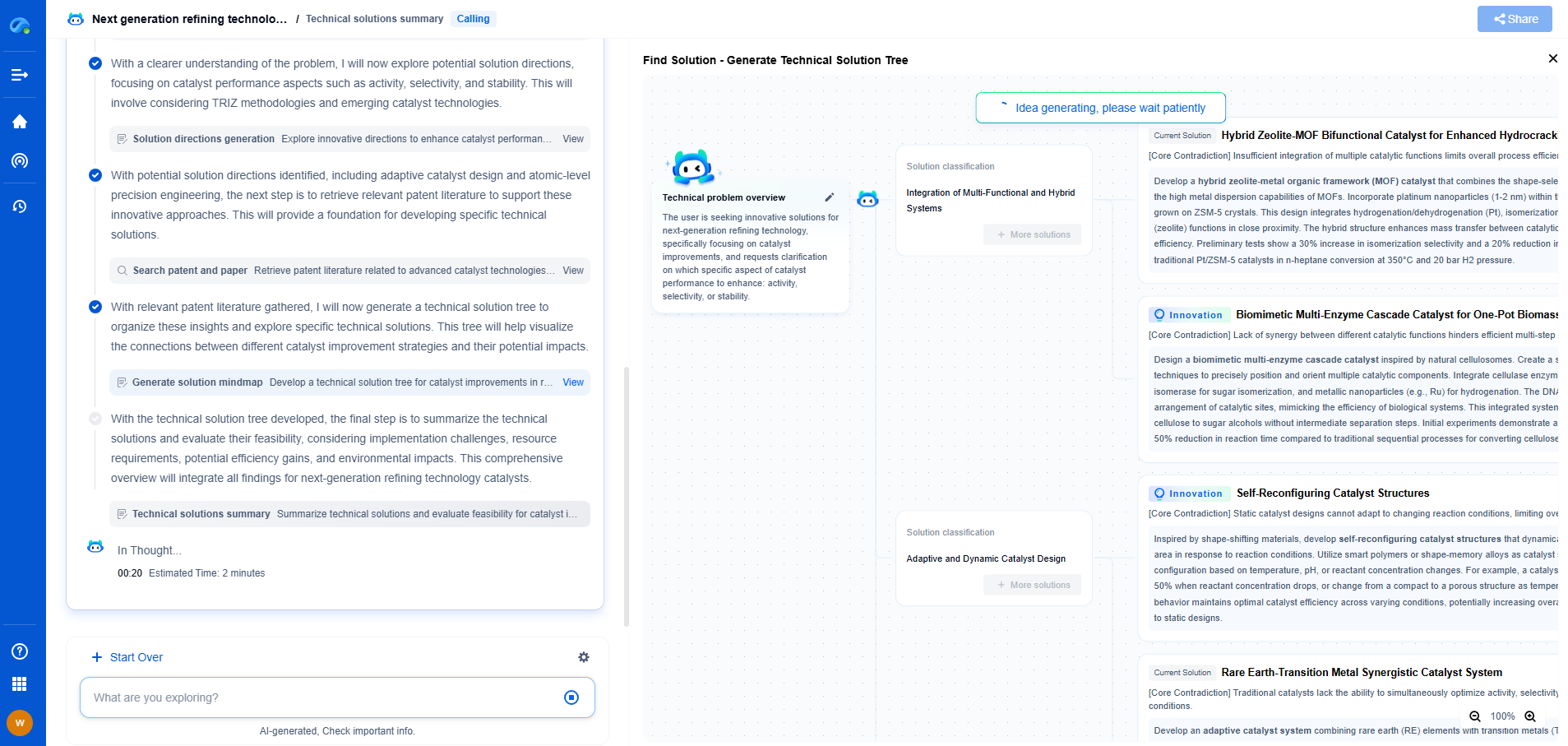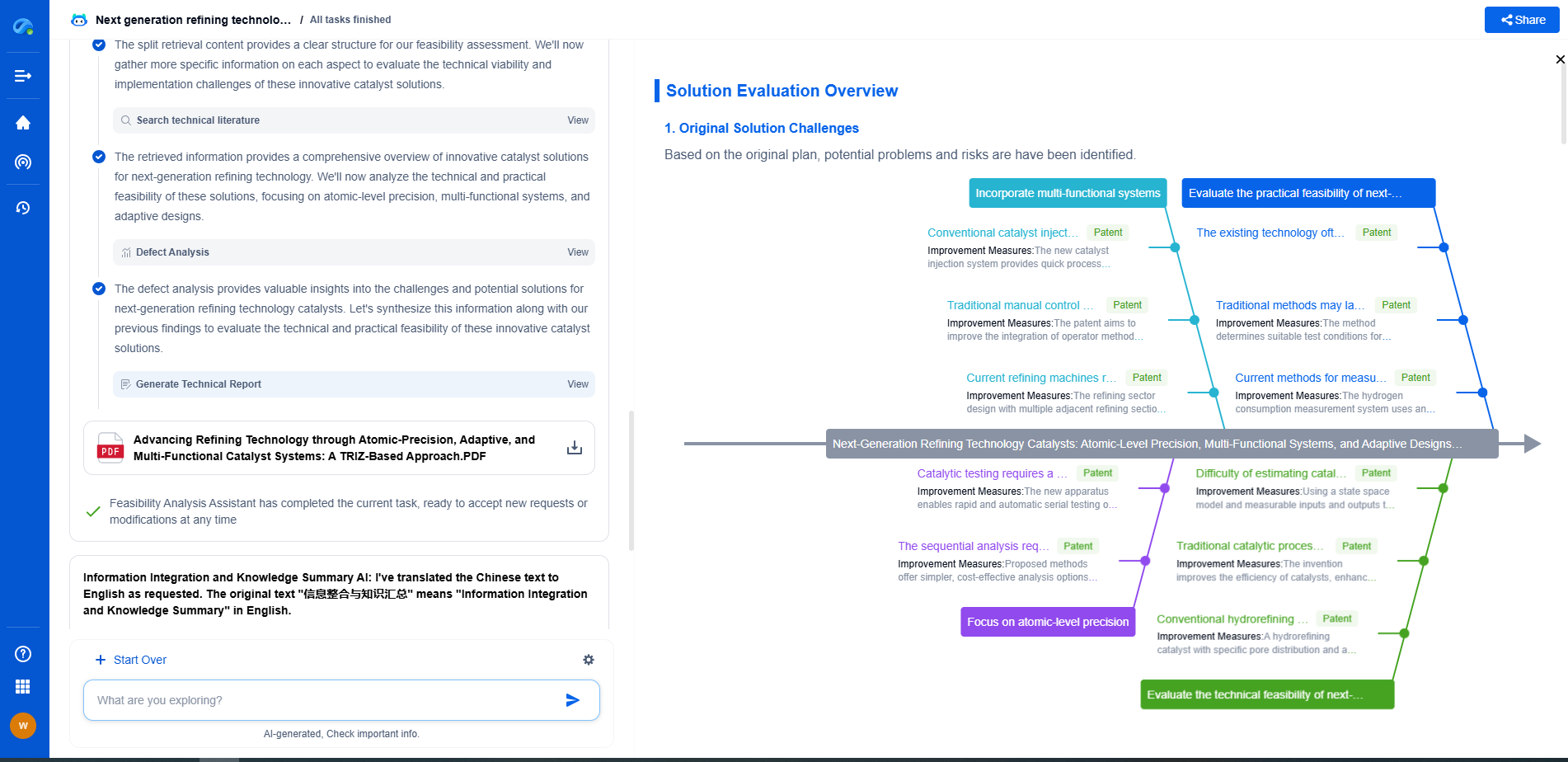What Is Signal-to-Noise Ratio (SNR) and Why It Matters in Measurements?
JUL 9, 2025 |
Signal-to-noise ratio (SNR) is a fundamental concept in various fields, including telecommunications, audio engineering, and scientific measurements. It represents the relationship between the desired signal and the background noise interfering with it. SNR is typically expressed in decibels (dB), quantifying how much a signal stands out from the noise. A high SNR means that the signal is much stronger than the noise, resulting in clearer and more reliable measurements or transmission.
Importance of SNR in Measurements
Accurate measurements are crucial across different industries and scientific research. Inaccurate readings can lead to flawed conclusions, affecting decisions and outcomes. Here’s why SNR is vital in measurements:
1. **Improved Accuracy and Precision**: A high SNR enhances the accuracy and precision of measurements. When the signal is much stronger than the noise, it reduces the chances of errors in data interpretation. This is particularly important in fields like medical imaging, where precise measurements can be a matter of life and death.
2. **Enhanced Signal Clarity**: For communication systems, a high SNR ensures that the received signal is clear and comprehensible. In audio systems, for instance, a higher SNR means better sound quality, allowing listeners to enjoy music or spoken word without the distraction of background noise.
3. **Reliable Data Analysis**: In scientific research, a high SNR allows researchers to distinguish meaningful data from random noise, leading to more reliable and valid results. This is crucial in experiments where subtle signals need to be detected amidst a noisy background, such as in particle physics or astronomy.
Factors Affecting SNR
Understanding the factors that influence SNR can help in improving it, thereby enhancing the quality of measurements:
1. **Signal Strength**: The strength of the signal itself is a primary factor. Amplifying the signal or ensuring that it is transmitted effectively without loss can help improve SNR.
2. **Noise Reduction**: Reducing noise is another way to enhance SNR. This can be achieved through various methods, such as using shielding to prevent electromagnetic interference, using filters to block unwanted frequencies, or employing noise-cancelling techniques in audio systems.
3. **Environmental Conditions**: External factors like temperature, humidity, and electromagnetic interference from nearby equipment can affect SNR. Controlling these environmental variables can help maintain a high SNR.
Applications of SNR
SNR plays a critical role in many applications, ensuring the quality and reliability of both data and communication:
1. **Telecommunications**: In telecommunications, a high SNR is essential for clear voice calls and fast, reliable internet connections. Technologies such as 5G rely on maintaining high SNR to support rapid data transfer and connectivity.
2. **Audio Engineering**: In audio recording and reproduction, a high SNR is crucial for achieving high-fidelity sound. Audio engineers strive to maximize SNR to ensure recordings are as true to the original sound as possible, without unwanted noise.
3. **Medical Imaging**: Techniques such as MRI and CT scans require a high SNR to produce clear images that accurately represent the internal structures of the body. This enables doctors to make precise diagnoses and treatment plans.
Conclusion
Signal-to-noise ratio is a critical metric in various fields, influencing the clarity, accuracy, and reliability of signals and measurements. Understanding and optimizing SNR is essential for anyone working with data acquisition, communication systems, or any technology where the quality of information is paramount. By focusing on enhancing signal strength and reducing noise, professionals can ensure that they achieve the best possible results in their respective domains.
Navigating the evolving world of electrical measurement—from high-precision signal integrity to advanced test protocols like BERT or TDR—demands more than just expertise; it demands smart tools.
Patsnap Eureka empowers you to keep up—by turning complex patent data, technical parameters, and industry signals into actionable insight. It’s your AI partner for exploring what’s next in test, measurement, and electrical diagnostics.
💡 Try Patsnap Eureka for free and see how it transforms the way you work with electrical measurement technologies.
- R&D
- Intellectual Property
- Life Sciences
- Materials
- Tech Scout
- Unparalleled Data Quality
- Higher Quality Content
- 60% Fewer Hallucinations
Browse by: Latest US Patents, China's latest patents, Technical Efficacy Thesaurus, Application Domain, Technology Topic, Popular Technical Reports.
© 2025 PatSnap. All rights reserved.Legal|Privacy policy|Modern Slavery Act Transparency Statement|Sitemap|About US| Contact US: help@patsnap.com

